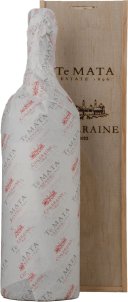Chateau Figeac 1er grand cru classe
While a fair share of Bordeaux vineyards can claim significant historical pedigree, few would be able to touch Chateau Figeac - it is one of a select few St Emilion vineyards to have been continuously occupied for over 2,000 years! The estate dates back to the second century when even the ancient Romans who occupied the area were aware of its outstanding terroir. One figure dominates the Chateaus modern era, and that is Thierry Manoncourt who ran the property from 1947 until his death in 2010, just shy of his 93rd birthday. Under his leadership, the Chateau was the first major Right Bank estate to embrace modern techniques such as temperature controlled, stainless steel vats. The traditional-styled Bordeaux has, understandably, gone through a wide range of iterations in its 2,000-plus year history - yet it still manages to surprise and delight. The 2016 earned rave reviews from critics, with Jancis Robinson hailing it as a wine of which ...the Manoncourt family should be very proud.
PAVILLON ROUGE DU Chateau Margaux Second wine of Chateau Margaux
The second wine of Chateau Margaux came about partly due to misfortune - when an attack of phylloxera decimated the vineyards, necessitating a replanting of the majority of their vineyards. The lack of grapes eliminated the possibility of a First Growth Quality wine and led to the production of their second wine - the Pavillon Rouge de Chateau Margaux, the first official vintage of which was released in 1906. Renowned as a sterling example of a second wine, the 2016 has been hailed as a particularly superb vintage. Medium-bodied, silky, intense and tannic, it continues its impressive trajectory year upon year.
Chateau Pavie
Another terrific success for the flagship estate (a 92-acre vineyard situated on the famed limestone and clay-rich slopes of Cote Pavie) of Chantal and Gerard Perse, the 2011 Pavie is composed of 70% Merlot, 20% Cabernet Franc and 10% Cabernet Sauvignon. 2011 may be the biggest, richest, most massive wine of the vintage. With thrilling levels of concentration, tremendous purity, high but sweet tannin, a skyscraper-like mouthfeel, and terrific intensity, depth and palate presence, this larger-than-life effort will require 5-8 years of cellaring, and should age effortlessly over the following 25-30 years.
Te Mata Estate Coleraine Cabernet Merlot
Te Matas Hawkes Bay estate is a prestigious winery with a rich history, producing some of New Zealands most celebrated wines. If the Langtons Classification crossed the Tasman, Te Mata Coleraine would sit alongside Grange at its very pinnacle. Established, esteemed, outstanding vintage after vintage, the glowing adjectives come thick and fast.
Château Ducru-Beaucaillou
Chateau Vieux Certan
The Vieux Château Certan estate has existed since the mid-1700s, though the date of establishment is unknown. Like all of the wines in the Pomerol Appellation, Vieux Château Certan is not classified but is widely regarded as one of the great growths of the region and one of the worlds great wines.
Chateau Petit Mouton
"Cabernet Sauvignon 77%, Merlot 19.5%, Cabernet Franc 3%, and Petit Verdot 0.5% This is Jean-Emmanuel Danjoy’s first solo vintage here after Philippe Dhalluin’s retirement. The proportion of Cabernet Sauvignon is up again; there’s more of an architectural feel than usual. The grand vin had a much stricter selection, so some of its historic parcels are now in this blend. This feels very Cabernet-driven, with notes of lead pencil contributing to a sturdy, spicy bouquet. The tannins are certainly ripe, adding a sense of restraint. This will become quite an interesting wine, presenting a different facet than usual, although it’s not one to be kept very long-term."
CHATEAU SMITH-HAUT-LAFITTE Rouge Grand cru classe
Dating back over 800 years in the Bordeaux region, Chateau Smith Haut Lafitte is owned today by Daniel and Florence Cathiard. The estate also features a world class spa, which specialises in Vinotherapie - using grape extracts in many of their treatments. Up until the year 2000, the estate was not known for producing top quality wines, however in the capable hands of the Cathiard family and after over a decade of hard work and reinvention, the wines truly began to come into their own. It has been, in the words of Andrew Caillard, an astonishing ascendancy in the past 15 years, and given the sterling reviews the 2016 vintage has received, its trajectory seems set to continue its meteoric rise.















